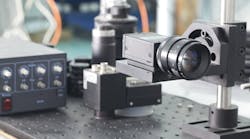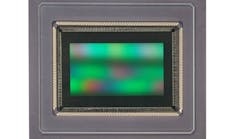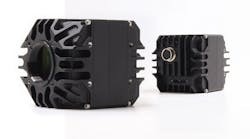NOVEMBER 15--Late last year, vision systems designers at Vision 1 (Bozeman, MT; www.vision1.com) were presented with a demanding and interesting challenge. A major processor of metal gaming tokens used in casinos throughout the world, which offers a service to its market of sorting tokens to determine those that are either too worn for use or that are no longer being used, decided to investigate machine vision because it found human inspectors too slow and too expensive. Additionally, the company discovered that too many good tokens were being scrapped and too many bad ones were being passed as good.
The performance goals for a prospective machine-vision system encompassed a range of factors. The coins had to be sorted at speeds faster than can be accomplished by human beings, who generally sort at the rate of 0.5 to 1 token per second. The sort included comparing each token with a "golden template," or new copy of the coin of interest for the current sort; the sort had to be accurate regardless of whether the reverse or obverse side of the coin was exposed to the camera. The system had to err on the side of rejecting good coins, while being adaptable to sort different tokens by simply replacing the template with a different token, so that it could handle an array of coin styles. The system also had to be easy to train by the operator and had to provide an output transistor-transistor-logic pulse when it detected a bad (mismatched) coin.
The Vision 1 team developed a single modular solution that consisted of a PC, a digital camera, and appropriate lighting. The single module was designed to image and process coins at a rate of five Eisenhower-dollar-sized coins per second. The "Image Classifier" tool from Vision Foundry (Data Translation; Marlboro, MA) was chosen as the "engine" of the system because it uses an algorithm based upon information theory that enables fast and accurate gray-scale image comparisons.
The developers chose the JAI CVM-10 camera--a progressive-scan 640 x 480 pixel, 0.5-in. monochrome CCD camera. It is economical and easy to manually configure (dip switches can be externally set to control shutter speed, scan type, trigger, asynchronous reset, gain correction, and so on). A single camera met the requirements for this application. Implementing a second camera would reduce cycle time per coin; however, the processing power of the PC was already largely consumed by the single camera approach.
For more information, see Laser Focus World, October 2001, or go to lfw.pennnet.com/Articles/Article_Display.cfm?Section=Articles&Subsection=Display&ARTICLE_ID=123543.




